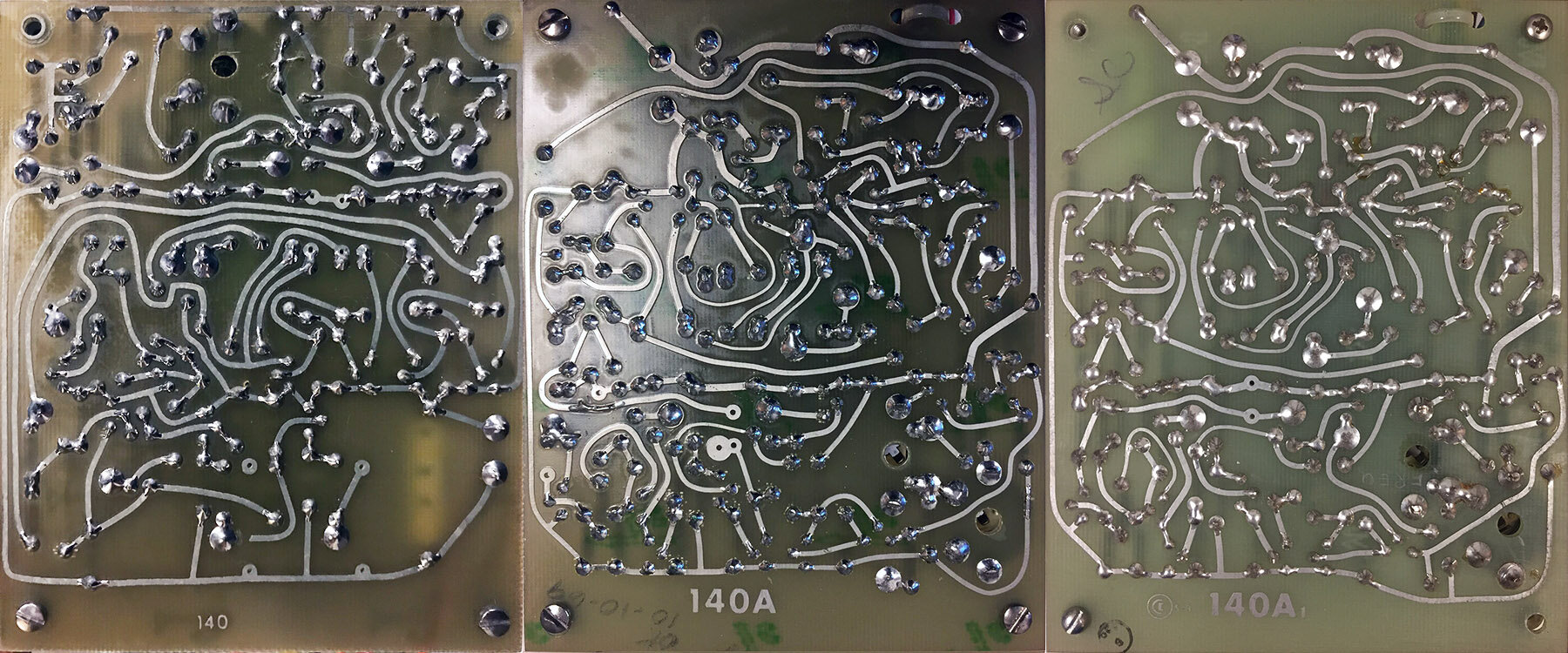TIMING PULSE GENERATOR MODEL 140
140 Panel artwork, Stearns Collection CBS 100 Series
The Model 140 Timing Pulse Generator is the heartbeat and nerve center of any 100 Series system. It’s far more than a simple clock.
The 140 sends out a pulse in intervals of .005 seconds to 20 seconds, and the width of the pulse can be modified by the Pulse Length knob, both of these adjustments can be controlled with CV.
The interesting portion of the 140 would be in the outputs, the two jacks on the right provide all pulse outputs, while the two on the send out alternating pulses.
This is done with an inverter circuit and a pseudo transistor logic AND gate, which monitors the high and low status of the output pulses. With alternating pulse outputs, one can interleave sequences or other triggers to initiate call and response within the patch.
LOGIC GATES
Many of the controls and interfaces surrounding the early Buchla 100 Series modules utilized transistor logic. Even though TTL logic ICs existed in this era (the 7400 series TTL ICs were commercially introduced in 1964 by Texas Instruments), Don chose to utilize discrete transistor logic. Once the pulse output is low, the transistor that is paired with the input pulse goes high and turns on the alternate output.
Later on as TTL ICs became more frequently utilized, ICs known as “flip-flops” would have done this with ease. But the simple elegance of discrete logic is just one of the nuances that make the 100 Series so special.
MODEL 140 VARIATIONS
140A From The Stearns Collection’s 100, CBS
There are a few variations found of the 140, besides the point-to-point wired one at Mills College.
The circuits do not differ from A to A1, those are mainly cosmetic and layout adjustments. There is a messy area where holes were drilled and parts were added. Those adjustments were rectified in revision 140A1.
On the San Fransico Tape Music Center module, the circuit differs in many areas.
Three Model 140 pcbs, from left to right, San Francisco Tape Music Center 140, CBS 140A, CBS 140A1



